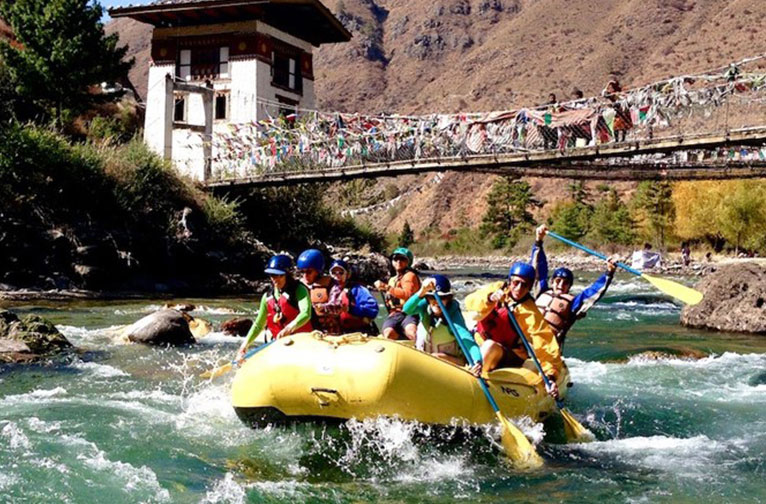7 Ecotourism Adventures in Bhutan to Explore Now

Imagine a land where the measurement of progress isn't GDP but the Gross National Happiness of its people. Welcome to Bhutan, a kingdom tucked away in the Himalayas, where the ancient traditions coexist with the commitment to ecological preservation. Ecotourism has become synonymous with travel in Bhutan, offering adventures that not only thrill but also contribute positively to the environment and local communities. Here are seven ecotourism adventures in Bhutan you should consider exploring now:
1. Trans Bhutan Trail
The Trans Bhutan Trail is an ancient path that traverses the length of Bhutan, originally used for trade and communication between villages and dzongs (fortress monasteries). Rediscover this historic route:
- Hike Length: Over 400km long, from Haa valley to Trashigang.
- Cultural Immersion: Stay in Bhutanese homes, learn about the customs, and experience the unique culture.
- Flora and Fauna: Encounter diverse ecosystems, from rhododendron forests to alpine meadows.
Embark on this trail for an authentic experience of Bhutanese life, spirituality, and natural beauty.
🌿 Note: The trail has been recently restored, providing trekkers with facilities like homestays and information boards.

2. Phobjikha Valley Crane Conservation
The Phobjikha Valley is not only one of Bhutan’s most picturesque regions but also the winter home of the rare Black-necked Cranes. Here’s what you can engage in:
- Conservation Projects: Join local conservation groups to learn about and assist in crane protection efforts.
- Bird Watching: Watch the cranes perform their graceful mating dances in the morning mist.
- Environmental Education: Educate yourself on the importance of wetlands and wildlife conservation.
This experience underscores Bhutan’s commitment to environmental stewardship.
3. Paro Taktsang (Tiger’s Nest) Trek
Taktsang, or Tiger’s Nest Monastery, clings dramatically to a sheer cliff 900 meters above the Paro Valley floor:
- Trekking: A 2 to 3-hour hike to the monastery, offering breathtaking views.
- Spiritual Experience: Discover the sanctity of this sacred site, where Guru Rinpoche, the second Buddha, is said to have meditated.
- Preservation: Note the efforts to preserve the natural and cultural heritage of the monastery.
4. Royal Manas National Park Safari
Spanning over 1,000 square kilometers, Royal Manas National Park is a biodiversity hotspot, harboring:
- Wildlife: Tigers, elephants, golden langurs, and numerous bird species.
- Conservation Work: Participate in wildlife monitoring and anti-poaching patrols.
- Sustainable Development: Learn how Bhutan balances tourism with park management.
5. Dochula Pass: A Tribute to Nature and Culture
The Dochula Pass, at 3,100 meters, is a scenic spot where 108 Druk Wangyal Chortens commemorate Bhutanese soldiers:
- Hiking: Enjoy the trek to the Lungchutse Monastery.
- Flora: Spot the many species of rhododendron in bloom.
- Culture: Witness the local culture with its chortens, prayer flags, and occasional festivals.
This pass is a blend of natural beauty and cultural expression, honoring Bhutan’s heroes and environment.
6. Punakha Dzong to Chimi Lhakhang Pilgrimage
Walk through lush farmlands from Punakha Dzong, considered Bhutan’s most beautiful monastery, to Chimi Lhakhang, known as the “Temple of Fertility”:
- Historical Route: Follow the path taken by pilgrims for centuries.
- Ecological Benefits: Contribute to ecotourism by engaging with local farming practices.
- Spiritual Fulfillment: Pray for fertility or blessings at Chimi Lhakhang.
7. Community-Based Tourism in Ura Village
Ura Village, with its traditional architecture and lifestyle, offers:
- Homestays: Experience true Bhutanese hospitality.
- Farming Activities: Join in local farming tasks to understand sustainable agriculture.
- Cultural Exchange: Participate in village life, festivals, and traditional crafts.
Exploring Bhutan through these ecotourism adventures not only promises you a journey filled with awe-inspiring landscapes and rich cultural experiences but also ensures that your visit leaves a positive impact. Each trip supports conservation efforts, community well-being, and helps to promote the sustainable development of this pristine kingdom. By choosing to explore Bhutan in this way, you become a part of a larger movement towards responsible travel, contributing to a world where adventure and environmental care go hand in hand.
How does Bhutan ensure sustainable tourism?
+Bhutan has several policies in place to ensure sustainable tourism, including:
- A daily sustainable development fee to promote high-quality, low-volume tourism.
- Strict environmental regulations to protect its natural resources.
- Community-based tourism initiatives to empower locals and preserve traditions.
Can I volunteer for conservation efforts during my trip to Bhutan?
+Yes, there are opportunities to volunteer with:
- Conservation groups in Phobjikha Valley for Black-necked Crane protection.
- Wildlife monitoring in Royal Manas National Park.
Make sure to coordinate with local organizations before your visit to ensure a meaningful contribution.
What is the best time to visit Bhutan for ecotourism?
+The optimal times for ecotourism in Bhutan are:
- Spring (March to May): Blooming rhododendrons, mild weather, and cultural festivals.
- Autumn (September to November): Clear skies, festivals, and the Black-necked Cranes arriving in Phobjikha.
Related Terms:
- Bhutan travel announcement
- Paragliding in Bhutan
- Festival in Bhutan
- Bhutan festival dates
- Bhutan new tourism policy 2023
- Trans Bhutan Trail itinerary



